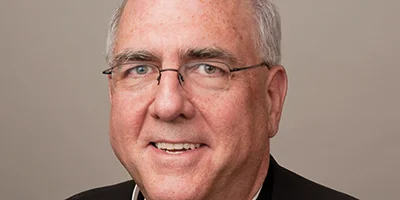by Archbishop Joseph F. Naumann
October 11 marked the 50th anniversary of the Second Vatican Council, the 20th anniversary of the Catechism of the Catholic Church, the opening of the synod of bishops on the new evangelization, and the official beginning of the Year of Faith. Quite a day in the life of the church!
I am grateful for all that The Leaven is doing to observe the 50th anniversary of Vatican II. I was nine years old when Pope John XXIII announced his intention to convene an ecumenical council. I was in eighth grade when Vatican II began on Oct. 11, 1962, and a junior at St. Louis Preparatory Seminary High School when the council officially closed on Dec. 8, 1965.
When the council opened in 1962, it was an exciting moment to be a young American Catholic. The first — and so far only — Catholic, John F. Kennedy, was serving as president of the United States. In St. Louis, Archbishop (eventually Cardinal) Joseph E. Ritter desegregated the Catholic schools in 1946, eight years before the landmark Supreme Court decision on the case of Brown v. the Board of Education that originated in Topeka. The church was in the forefront of the civil rights movement.
From my very limited perspective as a new seminarian, Pope John XXIII seemed to be beloved by the entire world. For the first time in her almost 2,000-year history, the church had convened a council of bishops, not because of some acute crisis, but to foster an internal renewal in order that the church could more effectively evangelize the world.
I was excited about the liturgical changes. It made perfect sense to me that the liturgy should be celebrated in the commonly understood language of the people, allowing the faithful to hear the beauty of the prayers in their native tongue.
My mother hosted in our home, Operation Renewal Groups, a program designed to help lay Catholics become acquainted with the rationale for changes in liturgy as well as other practices within the church. In the seminary, we were studying the council documents. I was thrilled to read the church articulating her beliefs with clarity and in a manner that spoke more readily to modern culture.
However, the optimism of the early 1960s was quickly challenged. President Kennedy’s assassination stunned our nation and the world. The peaceful, nonviolent civil rights protests were replaced by racial riots in many American cities.
The United States had become embroiled in a very unpopular war in Vietnam that deeply divided the nation. Protests against the war morphed into challenges against all authority. A youth subculture had developed which, while espousing some noble ideals, degenerated into the common use of drugs and sexual promiscuity.
The reforms of Vatican II resulted in some unintended consequences. With so much apparently changing within the church, many began to assume other even more dramatic and substantive changes were on the horizon.
Of course, to follow Jesus at any time in history inevitably requires sacrifice and a willingness to be countercultural. The changes of Vatican II — which were not alterations of fundamental teachings, but modifications of liturgical practices and other disciplines — were aimed at an interior renewal and deepening of the faith. Sadly, they caused some to believe that every teaching and discipline within the church was up for grabs. Some began to believe that whatever they found difficult in living their Catholic faith would eventually change.
A significant number of priests left the active ministry. Many married and assumed, when the church’s discipline for priestly celibacy changed, they would resume their priestly ministry. Similarly, the divorce of married couples became more common in society in general and among Catholics. Many married couples began practicing contraception, assuming that this clear, moral teaching of the church would also eventually change.
Pope Paul VI’s issuance of “Humanae Vitae,” the reaffirmation of the church’s teaching regarding marriage, the generation of children and sexual morality, surprised many Catholics. What was perhaps even more shocking was the immediate and well-organized opposition by some Catholic theologians — a few of whom later admitted that they had given their name to the opposition without ever having read “Humanae Vitae.”
“Humanae Vitae” made clear that every moral teaching, practice and discipline in the church was not up for grabs. The orchestrated opposition to “Humanae Vitae” revealed that a different narrative from that of the Council Fathers had taken hold in some quarters of the church.
Fifty years after Vatican II, we are still in the process of its implementation. The authentic renewal of the entire church and of individual Catholics, envisioned by Pope John XXIII and Pope Paul VI, has yet to be realized fully. Blessed John Paul II made this authentic implementation of Vatican II a primary goal of his papacy and the promulgation of the Catechism of the Catholic Church was an important fruit of his efforts.
Pope Benedict XVI has also made the authentic implementation of Vatican II a central focus of his papacy. The Year of Faith, inviting every Catholic to strive for a deeper friendship with Jesus as well as a moment to ponder the documents of Vatican II and the catechism, is envisioned to be an instrument for the authentic spiritual renewal begun 50 years ago. Similarly, the synod on the new evangelization is the fruit of Vatican II’s challenge to the church to engage fearlessly the modern and now the postmodern world.
Personally, I think that this Year of Faith is an exciting fruit of what began 50 years ago with the beginning of the council. Once again, I urge every member of the Archdiocese to respond to our special initiative: “Faith: Love It, Learn It, Live It.”
Paraphrasing and rearranging the ancient prayer of St. Richard of Chichester, may the Year of Faith help us: Love the Lord more dearly, know the Lord more clearly, and follow the Lord more nearly!



